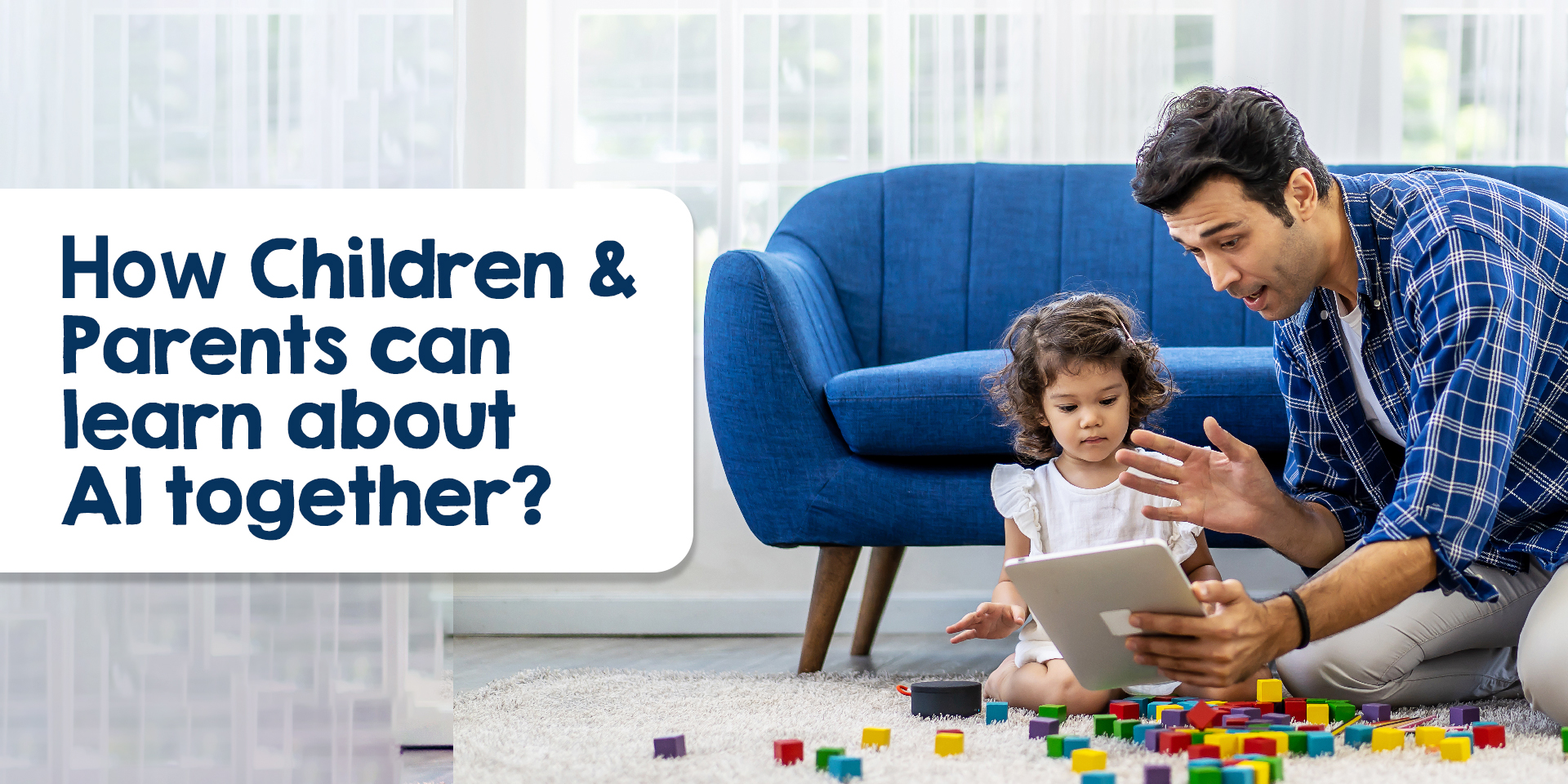Today’s fast-paced world is about the new generation of children surrounded by new Technologies. Although the rise of smart Technologies has increased drastically amongst children belonging to the new generation, there is still some dilemma in parents about how to effectively use new Technologies at home without compromising on data security. Families are trying to adjust and overcome the fear of their children getting left behind without knowledge and exposure to smart Technologies. Just like children, parents too should learn about AI.
AI literacy learning activities can foster an effective collaboration between tech-savvy parents and children. However, most tech-savvy parents were quite skeptical about the limitation of existing AI-powered virtual assistants. The kids’ edition of Amazon Echo does not have privacy policies for kids. On the contrary, more than 110 million virtual assistants are being used in the United States. More and more families are embracing virtual assistants in their homes.
Parents and children learn about AI together – The possibilities and outcomes
Here is a look at what happened when co-design sessions were used with families to find the answer to the following question.
What happened when parents and children learn about AI together?
The study design session for parents and children to learn about AI had the following:
- 15 families from across the United States
- 34 participants
- 11 learning activities for AI literacy
- 5-week in-home study
- 11 different languages spoken by the family
- 5 sessions per family
During the AI literacy program:
- Families from various backgrounds had exposures of different levels to smart Technologies and smart devices.
- Each of the 15 families who participated got exposure and valuable learnings about machine learning, voice assistants, and image classification.
- The families also got the opportunity to design, create, and analyze their own AI assistants.
Different activities as a part of learning with AI
- Image classification
- Machine learning
- Voice Assistant
- Interactive coding
Children led from the front in AI literacy various activities with AI
- When interacting with AI, children led from the front, in both image classification and machine learning sessions.
- Parents were more of mentors and teachers, while children performed different activities.
- There were three incidents where parents learned from the AI observation powers and logic of children.
- During this AI literacy program, children came up with unique and creative AI-powered solutions and futuristic applications, which parents could hardly have imagined.
Compare with Voice Assistant game
- When specific questions were asked in the voice assistant game, the family members obtained contrasting answers when a particular question was asked to a family member and the voice assistant.
- This allowed tech-savvy parents to learn about AI, in particular which questions should be kept personal and which questions can be asked to a voice assistant.
- The families got freedom and flexibility of expressing and designing smart assistants when learning about new Technologies like AI and machine learning.
- When designing their own virtual assistants, family members carefully understand two key facts – ease of use of virtual assistants and potential biases of voice assistants and models not able to recognize certain accents and voices of children.
Engagement of families towards various learning processes
The learning activities that revolve around AI and machine learning allow families having different views, perceptions, knowledge, and attitudes to engage in the learning process of AI.
- Developing AI-powered conceptual learning
- Best practices with AI
- Meaningful and logical uses of AI and machine learning at home
- Reflecting on the power of AI for conceptual learning
- Engaging in crucial conceptual learning with AI
Designing activities for active participation of both parents and children
Various tangible activities engaged both families and children. AI-powered activities support multiple forms of active participation, for both children and parents.
AI literacy – Making families a third space to learn about AI and machine learning
- The AI literacy skills and practical hands-on application of AI empowered families to make effective use of AI devices and gadgets at home.
- Most of the time, parents and learners differed from each other due to their experiences, perception, and interpretation about any small space.
- There scope and growth of AI behavior outside the office.
AI literacy allows parents to act as a third space to learn about the power of artificial intelligence.


